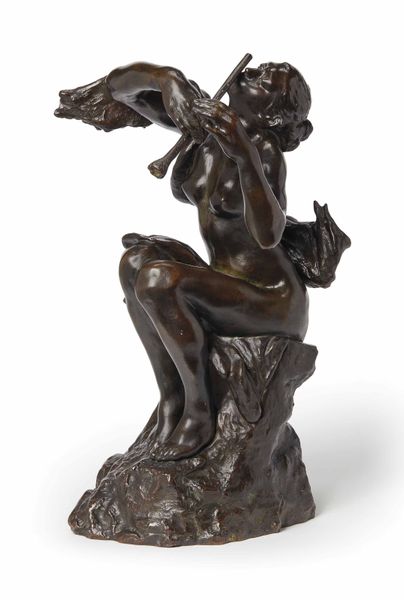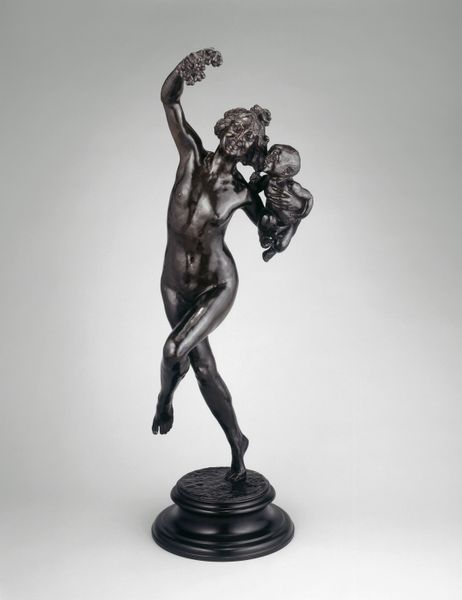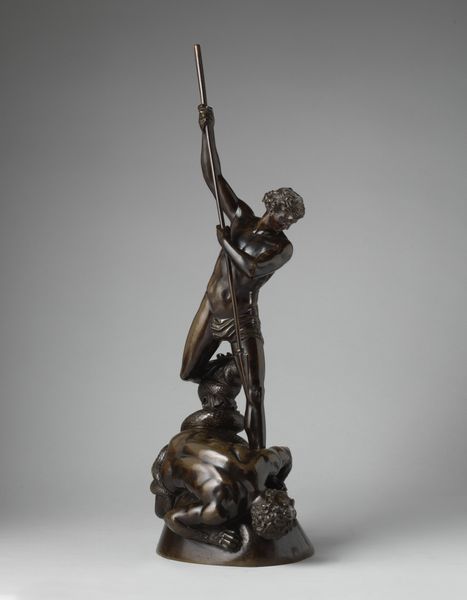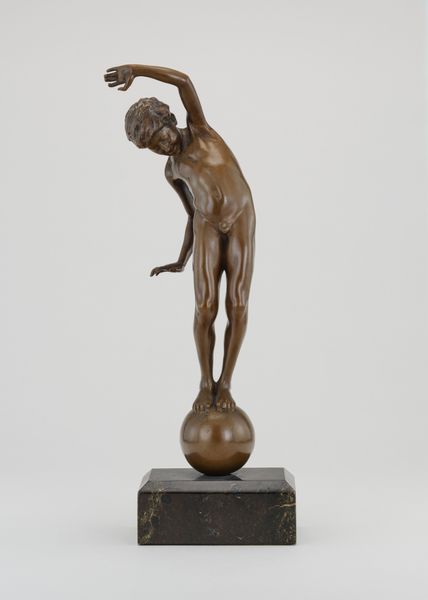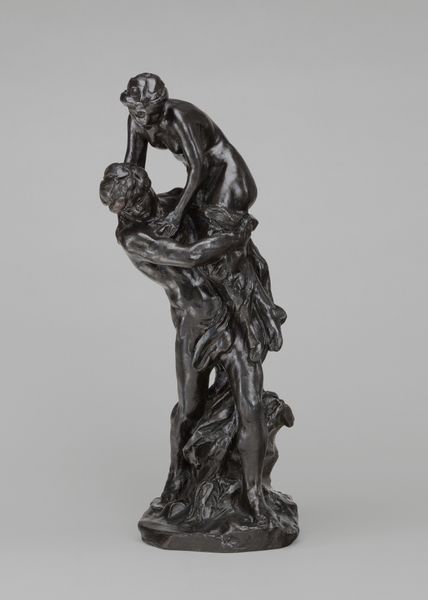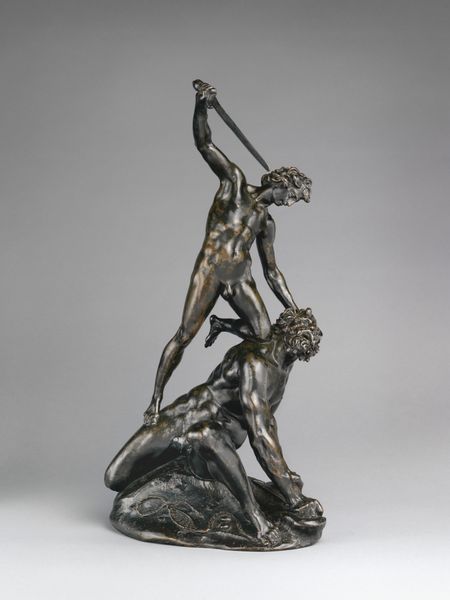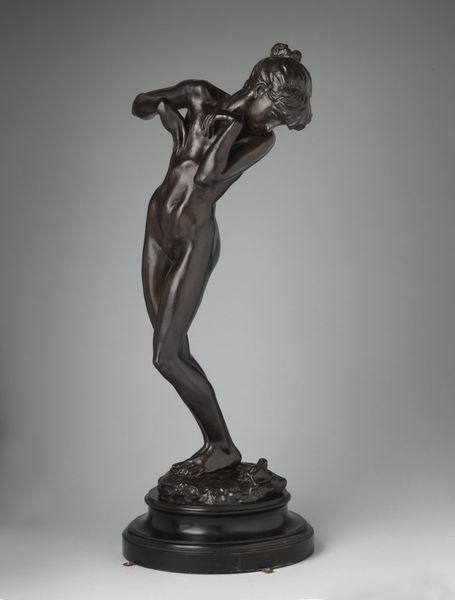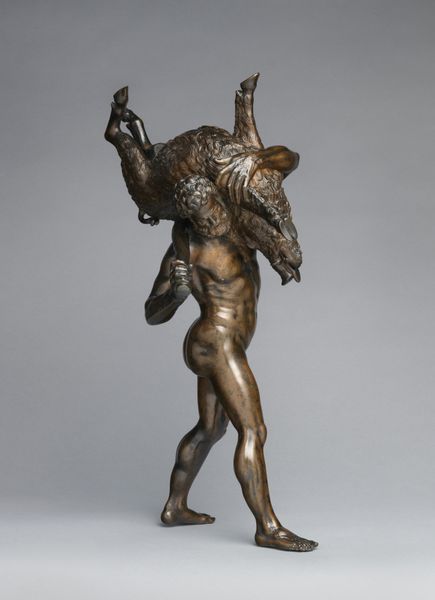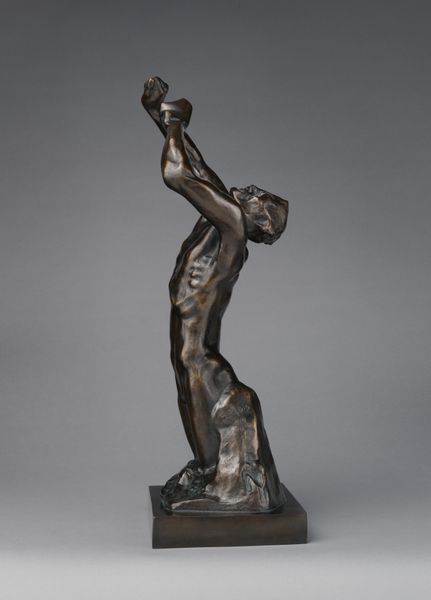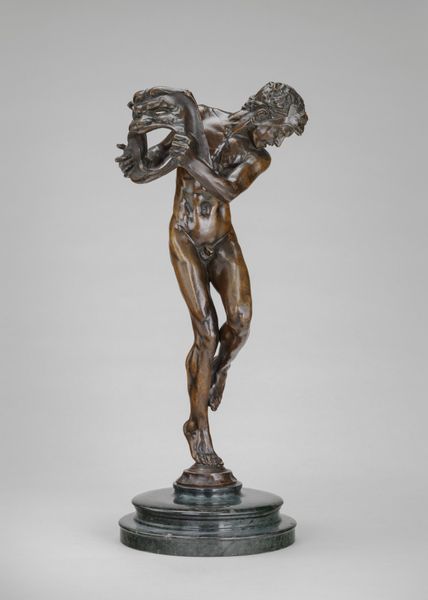
bronze, sculpture
#
stone
#
sculpture
#
bronze
#
mannerism
#
figuration
#
sculpture
#
nude
#
statue
Copyright: Public domain
Curator: What strikes me immediately about this bronze sculpture, "Triton," is its incredible dynamism. The figure seems to writhe and strain upwards. Editor: And that upward reach comes with the production demands for this material. Bronze lends itself beautifully to the spiraling form and captures the sense of movement in the subject. It feels both monumental and surprisingly light. Do you know who made it? Curator: We attribute it to Giambologna, an important sculptor working in Florence, around the late 16th century. "Triton," as the title suggests, depicts the mythological sea god blowing a conch shell. What's interesting is how this piece fits into the artistic milieu of the time. Mannerism favored precisely these sorts of complex, almost acrobatic poses. Editor: Exactly. And knowing it's bronze makes me consider the labor involved. It would be an elite production line: mining and smelting the ore, casting the form... these are all essential steps easily missed when you're only focused on Giambologna’s artistry. The scale and complexity would require skilled artisans. Who would this be made for? Curator: That's an important question. Such sculptures were commissioned by wealthy patrons, often rulers like the Medici family, to decorate their villas or gardens. They served as powerful symbols of status and refined taste, as well as a means to connect themselves to classical mythology and authority. In essence, Triton becomes a visual display of power. Editor: Right. And this piece reveals how such sculptures actively shaped, and continue to shape, social standing and privilege through art history. Curator: Precisely. So the next time you look at a sculpture like "Triton," consider it as not only a triumph of artistic skill, but also as a complex product intertwined with social and economic systems. Editor: I see a real interplay between skill, access and the projection of political authority. All essential in unlocking art’s broader role in culture.
Comments
No comments
Be the first to comment and join the conversation on the ultimate creative platform.

